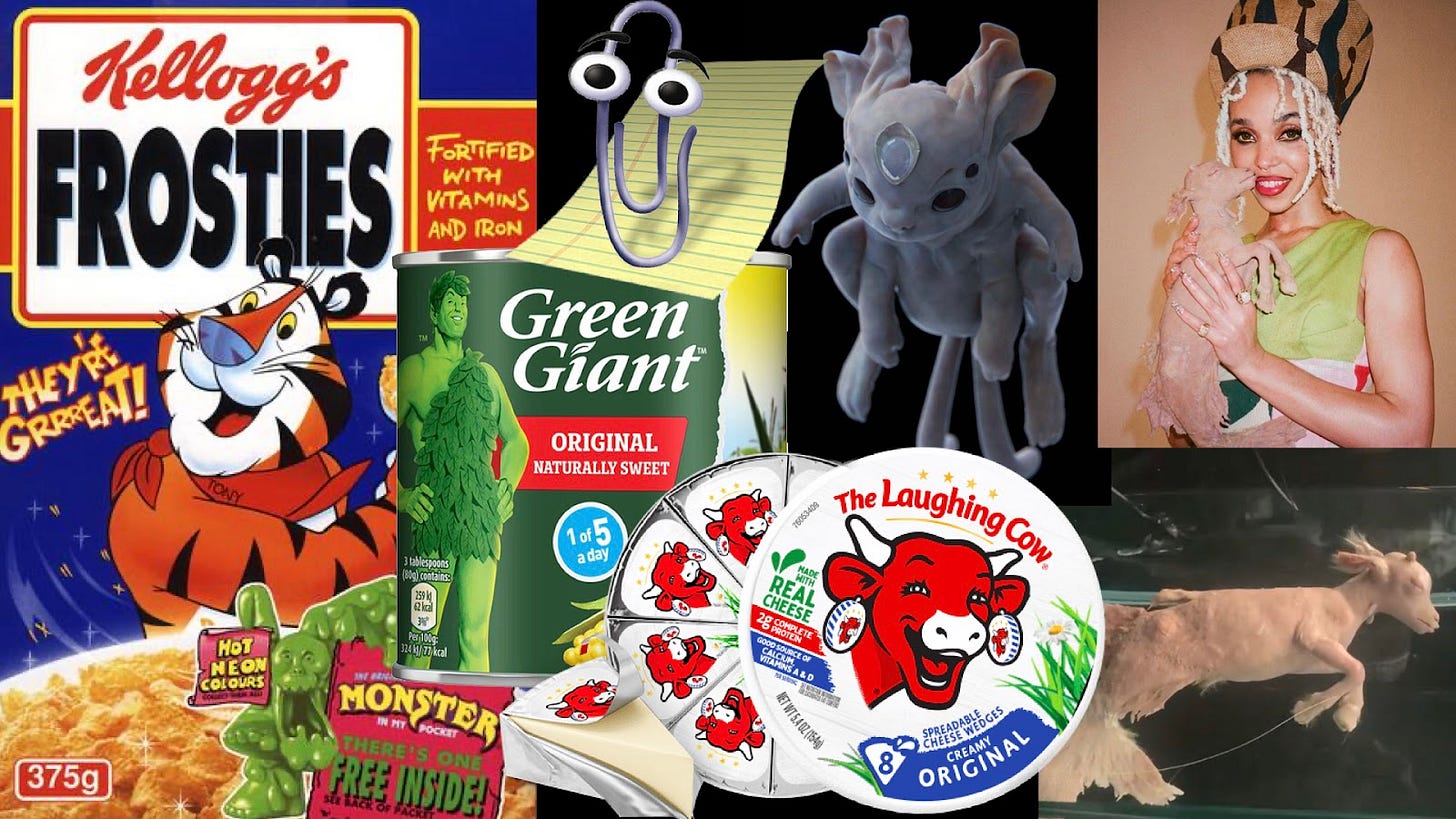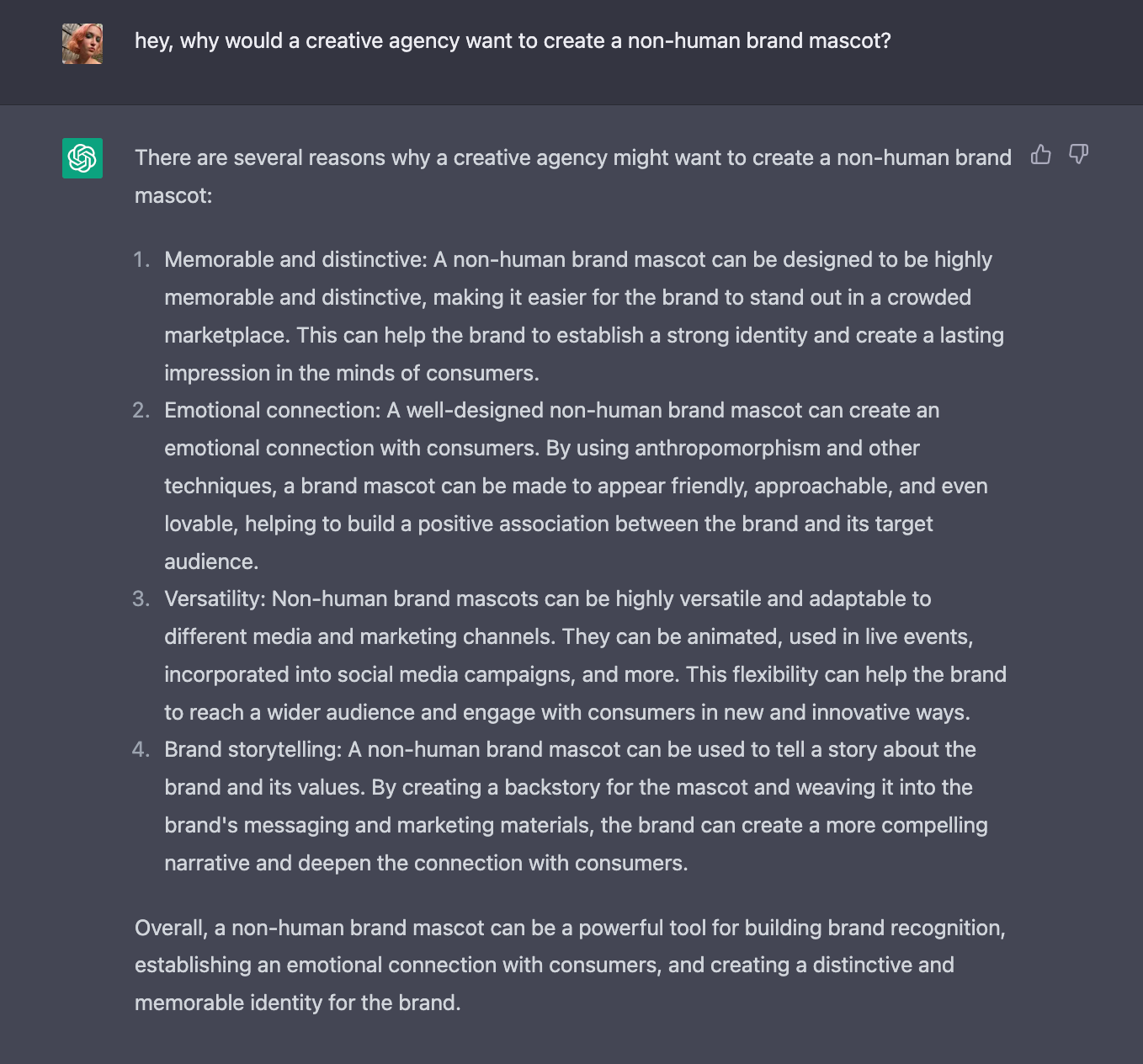020 — UH OH, MEET Ø
A brief history of brand mascots, as we get ready to welcome our newest friend 🥚
Surprise! MØRNING has a new friend on the way. We’ve been busy incubating Ø, our new ‘brand mascot’, which is really much more than a mascot, and more a creative partner for the MØRNING team to collaborate with.
To celebrate, this week’s edition of Burn After Reading by Kes Inkersole dives into the world of brand mascots (why do we love them so much? Why are the best ones non-human? How are they made?) and shares how our new friend Ø came to be. Watch this space…
It’s cute but bleak that most of our childhood memories are dotted with brand mascots. Whether you ate your packed lunch with a laughing cow, cheered ‘they’re grrreat’ after your breakfast or turned down the Green Giant’s invitation to dinner, all of our memories have been hijacked by these branded characters somewhere along the way.
Mascots like these have long been used by brands to help sell products. Unlike celebrity ambassadors, which have been shown to boost sales by 4%, it’s the non-human mascots - think: Hingie, Duo, Lil Mayo, - that do the job better. Celebs can sell us hopes and dreams, but they often represent the unattainable human. Brand mascots, in their non-humanness, do the opposite. They’re non-threatening and widely relatable, meaning whatever they’re trying to sell feels totally approachable (and purchasable). Not just that, but their fictionality means brand mascots are endlessly adaptable and open to imagination. They’re available 24/7 to shapeshift to any situation or story that their brand wants them to.
Human vs beast
Why are mascots usually animals or imagined creatures? Non-human characters act as a vehicle for brands to share their values with people in a more friendly, less-authoritative and perhaps even more values-aligned way. Ironically, while these brand mascots are non-human, they actually anthropomorphise the brand and their values, making them feel more human, by not being human at all. Because deep down, we are all sickened by association with our species…
Non-human brand mascots are naturally less attached to human-related biases, representing a set of values while being more removed from visual prejudices that have been constructed surrounding human figures (would you cancel Clippy?).
Instead of breaking (or refracting) the fourth wall, non-human mascots allow people to see themselves (their values) without actually seeing themselves (or any human at all, a characteristic which is especially welcome at a time when we constantly have to see ourselves reflected back at us via Zoom).
Brand mascots often appear as on behalf of rather than part of the brand. It might be this seeming lack of agenda which encourages trust between people and mascot. But what if a brand mascot did have an explicit agenda? This is what MØRNING has been busy exploring…
Beast vs tech
But before we get into that, we can’t forget how brand mascots are made. Some kind of technology is essential in the process of creating a non-human brand mascot, though. Whether it’s 3D rendering - see Arca’s Mima. Or a taxidermy-inspired silicon mould with 3D printed lungs - see Yasmin Whitlock’s goat baby for FKA Twigs. Utilising technology in novel ways provides brands with an opportunity to demonstrate their relevance and, dare I say, innovation.
But that doesn’t mean technological innovation is always positive: case in point, when Silicon Valley tried to use a deepfake of Bruce Willis as a mascot, to much controversy and confusion. Yes, cyborgs are powerful symbols of the evolving relationship between human x machine, and have manifested as mascots of our future for decades (think 90s symbols of the rave scene and cyber feminism). But the Bruce deepfake made the mistake of a) trying to replicate a human and b) covering up less-than-authentic intentions.
Technology facilitates the imagination of infinite worlds, and infinite mascots. But brands should play by some golden rules. Stick to the non-humans (they do the job better), and, as always, keep those intentions pure.
Which brings us to…
Meet Ø
We’ve been busy incubating Ø - our new ‘brand mascot’ that is much more than a mascot and rather a creative partner for MØRNING misfits and people to collaborate with.
Ø is the MØRNING oracle. The word ‘oracle’ is derived from the Latin word oraculum, which refers both to a divine pronouncement or response concerning the future or the unknown.
Ø is neither human nor animal, a creature in between worlds. Here to explore our evolving biases as we constantly navigate through emerging spheres and identities. Ø is an otherworldly creature. At first, it is unclear where they have come from or why they are here. They are in a state of (re)birth. Why now?
Their shiny latex egg has arisen from the ashes of a failed human x machine partnership from the past, and in the style of a phoenix, has arisen in an attempt to do the partnership justice.
Ø has a story to tell and a mission to fulfil, in order to try and help MØRNING and the world be less shit. This is a huge responsibility for Ø, and they take their time to crack from their egg, bracing themselves for the biases they’re about to witness.
More on Ø coming soon. But in the meantime, check out a non-human version of this newsletter… created in collaboration with ChatGPT-4 👾
Until next time!
Words: Kes Inkersole
Editor: Letty Cole
Credits: Big ups to the MØRNING hive mind for their collective references included in this piece and to the MØRNING misfits who’ve been incubating Ø towards their (re)birth - Rhi, Kes, Ro, Alisha, Karen, Lydia, Sam, Roxy 🖤 Thank you so much to Jae Yeon Kim for designing Ø 👽










"Because deep down, we are all sickened by association with our species…" really felt that one!
ARCA's Mima is the one! Super interesting read Kes 🙏